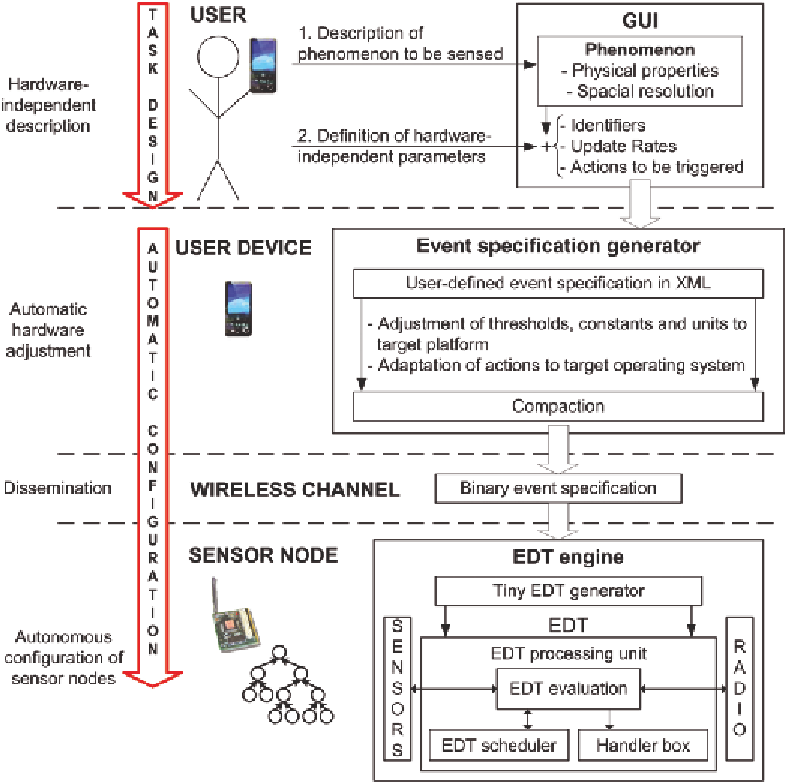Information Technology Reference
In-Depth Information
A
collaboration region
is the vicinity of each
node, in which neighboring nodes are permitted
to share their sensing features for collaborative
event detection. This collaboration region depends
on the expected expansion of the phenomenon and
the average distance of the deployed sensor nodes.
flow of the WSN-configuration concept based
on ESL and EDTs. Figure 2 depicts a graphical
representation of this workflow. The uncoupled
task definition process allows the user to define
the “things-in-mind” to be sensed independently
from the WSN. Therein, the user merely describes a
phenomenon and adds some phenomenon-related
parameters such as identifiers and update rates.
Having finished the description process, the
user device automatically expresses these “things-
in-mind” in ESL, resulting in the
event specifica-
Design Flow
Before presenting technical details of every con-
figuration step, this section overviews the work-
Figure 2. Graphical representation of the user-centric workflow for WSN-configuration based on the
ESL and EDTs. The uncoupled task definition process allows the user to define the “things” to be sensed
independently from the WSN, which is automatically configured to each designed task.

Search WWH ::

Custom Search